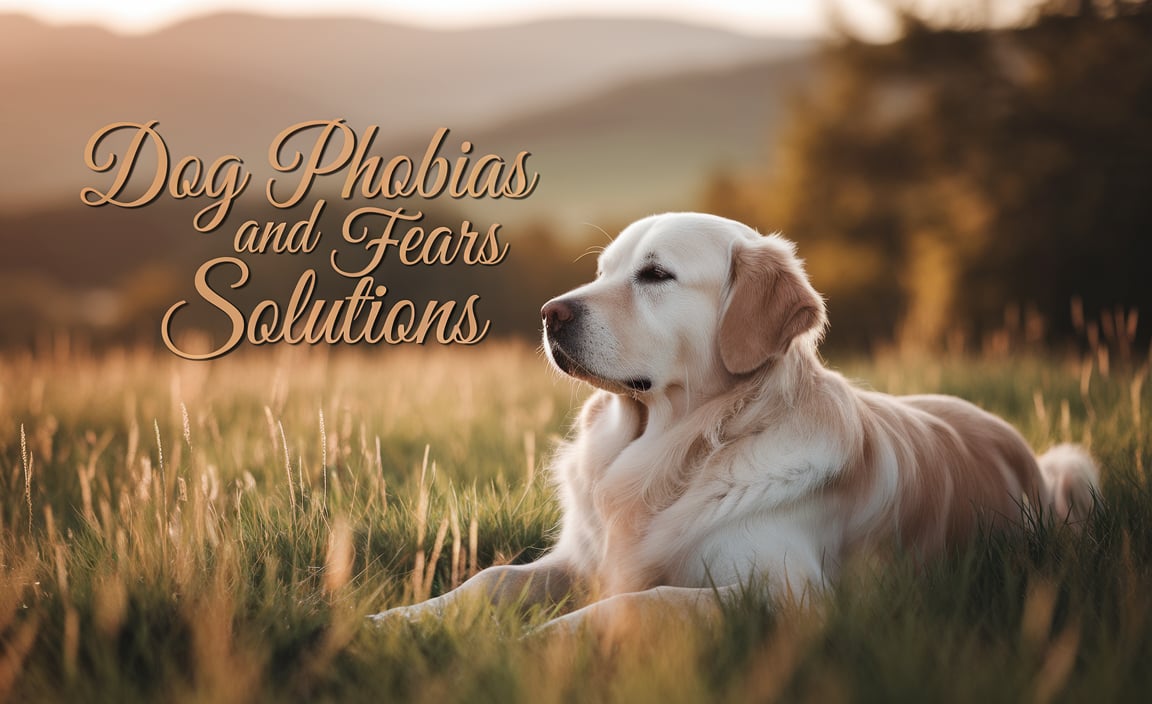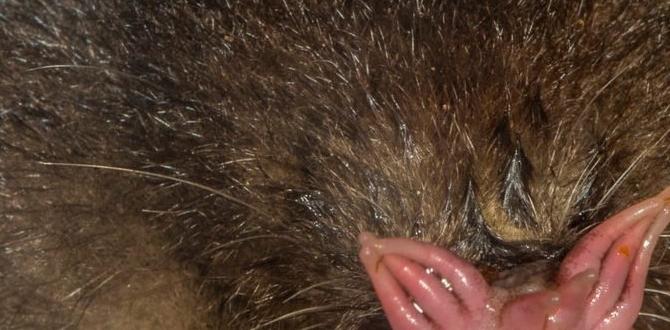Don’t let your dog’s attention-seeking behaviors disrupt your life! This guide offers practical, easy-to-implement tips to understand and redirect your dog’s need for attention positively, fostering a stronger bond and a calmer home. Learn to manage barking, pawing, and jumping with proven strategies.
Does your furry friend seem to have a PhD in getting your undivided attention? Whether it’s a nudge of the nose, a persistent bark, or a dramatic sigh, dogs often employ various tactics to ensure we’re looking their way. While it’s a testament to the loving bond we share, excessive attention-seeking can sometimes become a challenge, leading to unwanted behaviors that disrupt our day. But don’t worry! Understanding why your dog seeks attention is the first step toward managing these behaviors effectively and building an even more harmonious relationship. This guide will walk you through practical, beginner-friendly tips to address dog attention seeking, turning those demanding behaviors into happy interactions.
Why Does My Dog Seek Attention? Understanding the “Why”
Before we dive into solutions, let’s explore the root causes of attention-seeking behavior in dogs. It’s rarely a sign of a “bad” dog, but rather a dog trying to communicate a need or desire. Understanding these motivations helps us respond appropriately.
Common Reasons for Attention Seeking:
- Boredom and Lack of Stimulation: A dog with pent-up energy or a lack of mental engagement will often seek interaction to alleviate their boredom. They might not understand what else to do with their time.
- Loneliness and Separation Anxiety: Dogs are social creatures. If left alone for long periods, or if they experience anxiety when you’re away, they may seek attention the moment you return, or even when you’re present but distracted.
- Learned Behavior: This is a big one! If a dog has learned that barking, pawing, jumping, or whining reliably gets them attention (even negative attention, like being told “no”), they’ll continue to use those tactics.
- Seeking Comfort or Reassurance: Sometimes, a dog might seek attention because they are feeling anxious, scared, or unwell. They look to their trusted humans for comfort.
- Desire for Play or Interaction: Simply put, your dog might just want to play, go for a walk, or engage with you because they love you and enjoy your company!
- Medical Issues: In some cases, a sudden increase in attention-seeking behavior could be a sign of an underlying medical problem, such as pain, discomfort, or cognitive decline in older dogs. Always consult your veterinarian if you notice sudden, drastic changes in behavior. You can find helpful information on recognizing behavioral changes in pets on the American Veterinary Medical Association (AVMA) website.
Is My Dog Seeking Attention or Something Else? Recognizing the Signs
It’s important to distinguish between attention-seeking and other behaviors. While some overlap exists, recognizing the specific cues can help you tailor your approach. Here are common attention-seeking behaviors:
- Excessive Barking or Whining: Especially when you are busy or not directly interacting with them.
- Pawing or Nudging: Gentle (or not-so-gentle) pawing at your legs, hand, or face.
- Jumping Up: A common way for dogs to get closer to your face and ensure you acknowledge them.
- Bringing You Toys (Constantly): While often a sign they want to play, if it’s incessant and disruptive, it might be for attention.
- Restlessness or Pacing: Especially if it’s directed towards you or when you’re engaged in an activity they can’t join.
- Staring Intensely: That unwavering gaze can be hard to ignore!
- “Accidents” Indoors: While sometimes a sign of medical issues or house-training lapses, some dogs learn this gets a lot of immediate attention.
It’s crucial to assess the context of these behaviors. Is your dog barking at the door because they need to go out, or because they see you on your laptop and want you to play? Observing when and how these behaviors occur is key.
Essential Tips for Managing Dog Attention Seeking Behaviors
Now that we understand the “why” and “what,” let’s get to the “how.” These tips are designed to be implemented with kindness and consistency, reinforcing positive interactions and discouraging demanding behaviors.
1. The Power of Ignoring (Selective Ignorance)
This is often the most effective, yet challenging, strategy. When your dog performs an unwanted attention-seeking behavior (like barking, pawing, or nudging), the goal is to give them ZERO attention. This means:
- No eye contact: Don’t look at them.
- No talking: Don’t scold, call their name, or try to reason with them. This is still attention!
- No touching: Don’t push them away or pet them.
How it works: Your dog is seeking a reaction. If they don’t get one, the behavior becomes unrewarding. They will eventually (and this can take time and patience!) learn that the behavior doesn’t achieve their goal. When you offer attention, it must be for a desired behavior, not the attention-seeking one.
Important Note: Ensure your dog’s basic needs are met before employing this. They shouldn’t be ignored if they genuinely need to go outside, are hungry, or are in distress.
2. Reward the “Right” Behavior: Catching Them Being Good
This is the flip side of selective ignoring, and arguably the most important part of the strategy. You want to actively reward your dog when they are calm, quiet, and not demanding attention. This reinforces the behaviors you do want.
- Randomly sprinkle praise and treats: When your dog is lying quietly on their bed, playing with a safe toy on their own, or simply resting near you without demanding interaction, offer quiet praise or a small treat.
- Reward calm greetings: When you come home, ignore your dog for the first few minutes until they calm down. Once they are settled, greet them calmly. You can reward them for not jumping or barking excessively upon your arrival.
- Reinforce independent play: If your dog toys are accessible and they choose to play with them alone, find a moment to praise them or toss them another treat.
Key Takeaway: Make “being calm” more rewarding than “demanding attention.”
3. Provide Sufficient Mental and Physical Exercise
A tired dog is a good dog, and this applies strongly to attention-seeking behaviors. Many attention-seeking behaviors stem from boredom and excess energy. Ensuring your dog has adequate outlets for their energy can significantly reduce their need to demand your attention.
- Daily Walks: Aim for walks that are appropriate for your dog’s breed, age, and energy level. Make walks stimulating with different routes and smells.
- Playtime: Engage in active play sessions like fetch, tug-of-war (with rules!), or chase.
- Puzzle Toys and Food Dispensing Toys: Excellent for mental stimulation. These toys make your dog “work” for their food or treats, engaging their problem-solving skills.
- Training Sessions: Short, frequent training sessions (5-10 minutes) can be mentally exhausting and rewarding for your dog.
- Nose Work/Scent Games: Hide treats around the house or garden and let your dog sniff them out. This is a highly engaging and satisfying activity for most dogs.
A good rule of thumb is that a physically and mentally satisfied dog is less likely to look for trouble or demand your attention out of sheer ennui. Resources like The American Kennel Club (AKC) offer great ideas for mental stimulation.
4. Teach an Alternative Behavior
Instead of just trying to stop an unwanted behavior, teach your dog what you want them to do when they are seeking attention.
- “Go to Mat/Place”: Train your dog to go to a designated mat or bed and stay there. This is perfect for teaching them to settle while you are busy. When they go to their mat willingly, reward them.
- “Speak” and “Quiet”: For barking, you can strategically teach “speak” (so they know what the cue means) and then heavily reward “quiet” when they stop barking after the cue. This gives you more control.
- Rewarding calm sitting: When your dog approaches you and wants attention, ask them to sit. Reward the sit, and then, if they remain calm, you can offer a brief moment of petting or praise. If they break the sit and start demanding again, revert to ignoring.
This teaches your dog that specific, polite behaviors will earn them the attention they desire.
5. Scheduled Attention and Playtime
Dogs thrive on routine. By scheduling dedicated playtime and interaction, you can help reduce their constant need to seek attention throughout the day.
- Set aside specific times: Dedicate 15-20 minutes a few times a day for focused interaction with your dog. This could be a training session, a cuddle session, or a brisk game of fetch.
- Make it predictable: Knowing that dedicated attention is coming can help your dog relax and be more content during the times you are unavailable.
- Communicate your availability: If you’re working from home, let your dog know when you’ll be available for a break.
This proactive approach ensures your dog’s social needs are met, making them less likely to resort to disruptive behaviors when you’re occupied.
6. Manage Their Environment
Sometimes, preventing the opportunity for attention-seeking behavior is the easiest solution, especially in the initial stages of training.
- Crate Training: When you can’t supervise them directly and they tend to solicit attention disruptively, a safe crate can be a haven. Ensure it’s a positive space, not a punishment.
- Baby Gates or Exercise Pens: Restrict access to certain areas where their attention-seeking might be most problematic when you can’t actively manage them.
- Provide Engaging Toys: Make sure they have appropriate, interesting toys readily available to occupy themselves.
This isn’t about neglecting your dog, but about strategically managing their environment to set them up for success and prevent unwanted behaviors from being reinforced.
7. Be Consistent: The Golden Rule
This is perhaps the most critical element for success. Everyone in the household must be on the same page and practice the same rules consistently.
- Unified Front: If one person ignores the barking and another gives in, the dog will get confused and will continue to try the behavior, as they never know which person might actually reward them.
- Patience is Key: Behavior change takes time. There will be good days and bad days. Don’t get discouraged if you see a regression; simply return to your consistent training plan.
- Long-Term Commitment: Consistency isn’t just for a few weeks; it’s for the life of your dog.
Consistency ensures your dog clearly understands what behaviors earn them rewards (or no reward) and what is expected of them. For more on consistency in training, check out resources on positive reinforcement training from organizations like Patricia McConnell, PhD, a well-respected animal behaviorist.
When to Seek Professional Help
While most attention-seeking behaviors can be managed with patience and consistent application of the tips above, sometimes it’s beneficial to involve a professional:
- Severe Anxiety or Destructive Behavior: If attention-seeking is accompanied by significant separation anxiety, destructive chewing, excessive vocalization that causes distress to neighbors, or aggression.
- Sudden Behavioral Changes: If your dog’s attention-seeking behavior has suddenly increased or changed drastically, it’s essential to rule out any underlying medical conditions with your veterinarian.
- Lack of Progress: If you’ve been consistently applying the techniques for a significant period (e.g., 4-8 weeks) and are not seeing any improvement, a certified professional dog trainer or a veterinary behaviorist can offer personalized guidance.
A qualified professional can help identify specific triggers, tailor training plans, and provide support through challenging behavioral modifications. Organizations like the International Association of Animal Behavior Consultants (IAABC) can help you find qualified professionals in your area.
Putting It All Together: A Sample Day’s Plan
Let’s visualize how these tips might look in action over a typical day.
| Time | Activity | Focus for Attention Seeking |
|---|---|---|
| Morning (Wake-up) | Potty break, then quiet breakfast for you. | Ignore pawing/nudging. Reward calm waiting by the door or on their mat. |
| After Breakfast | 15-minute training/play session. | Active, positive interaction. |
| Mid-morning | You’re working/busy. Dog has access to puzzle toys. | Ignore barking for attention. Reward quiet play or resting. Offer a chew toy. |
| Lunchtime | Short walk/potty break. | Keep greetings calm. Reward a sit before leash is attached. |
| Afternoon | Dog rests or entertains themselves. | Offer praise and occasional treats for calm behavior, NOT for soliciting it. |
| Evening | Family playtime or another walk. Settle time while you relax. | If dog nudges for petting while you’re watching TV, ask for a “sit.” Reward calm sitting with gentle pets. If they push it, ignore again. |
| Bedtime | Final potty break. | Keep it brief and business-like. Your reward is sweet dreams! |
This is a simplified example, and your dog’s schedule will vary! The core principle is consistent rewarding of calm behavior and ignoring of attention-seeking tactics.
FAQs: Your Burning Questions Answered
Q1: My dog barks incessantly for attention. What’s the fastest way to stop it?
The fastest way to stop it isn’t necessarily the most effective long-term. For barking, you need to consistently ignore it until it stops, and then reward the silence. Also, ensure they aren’t barking out of genuine need (e.g., to go potty) and that they receive enough daily exercise and mental stimulation to reduce boredom barking.
Q2: If I ignore my dog when they demand attention, won’t they think I don’t love them?
Not at all! Your dog will learn that you love and appreciate calm, polite behavior. They will understand that demanding tantrums don’t work, but quiet companionship and appropriate requests do. You can show your love through scheduled playtime, training, and affection when they are calm.
Q3: My dog jumps on me every time I come home. How can I stop this?
When you arrive home, turn your back or step away if your dog jumps. Do not speak to them or make eye contact until all four paws are on the floor. Once they are calm and have all paws on the floor, you can greet them calmly. Reward them for this calm greeting. It takes patience, but they will learn that jumping prevents the greeting they want.
Q4: I have multiple people in my household. How do we ensure everyone is consistent?
This is crucial! Have a family meeting. Discuss the strategies, agree on the rules, and practice them together. Write down the agreed-upon plan so everyone can refer to it. If one person is consistent and another isn’t, the dog will remain confused.
Q5: My dog acts out for attention when I’m on the phone. What can I do?
This is a common scenario. Before you take a call, give your dog a high-value chew toy or a puzzle feeder to keep them occupied. If they start to solicit attention, ignore them as discussed. You can also train a “go to your mat” cue which can be very handy during phone calls.
Q6: My older dog has recently started seeking tons of attention. Could this be a medical issue?
Yes, it absolutely could be. Increased attention-seeking, confusion, or sudden behavioral changes in older dogs can be indicators of cognitive dysfunction (similar to dementia in humans), pain, or other age-related health issues. It’s highly recommended to schedule a veterinary check-up to rule out any underlying medical causes.
A Happier, More Connected Life with Your Dog
Managing dog attention-seeking behaviors is a journey that requires patience, understanding, and most importantly, consistency. By recognizing the underlying reasons for your dog’s actions and implementing positive, reward-based strategies, you can transform disruptive behaviors into opportunities for strengthening your bond. Remember, your goal isn’t to stop your dog from wanting your attention, but to teach them healthy, appropriate ways to seek it. You’re not just training a behavior; you’re building a deeper, more trusting relationship with your beloved canine companion. With these tips, you’re well on your way to a calmer home and a happier dog!
Meet Elyse Colburn, the devoted canine companion and storyteller behind the enchanting world of “Tales, Tails, and Adventures Unleashed.” A passionate dog enthusiast with a heart full of paw prints, Elyse Colburn shares heartwarming tales and insightful adventures, celebrating the joy, loyalty, and endless antics that make every dog a true hero. Join Elyse Colburn on this tail-wagging journey, where every post is a love letter to our four-legged friends.




